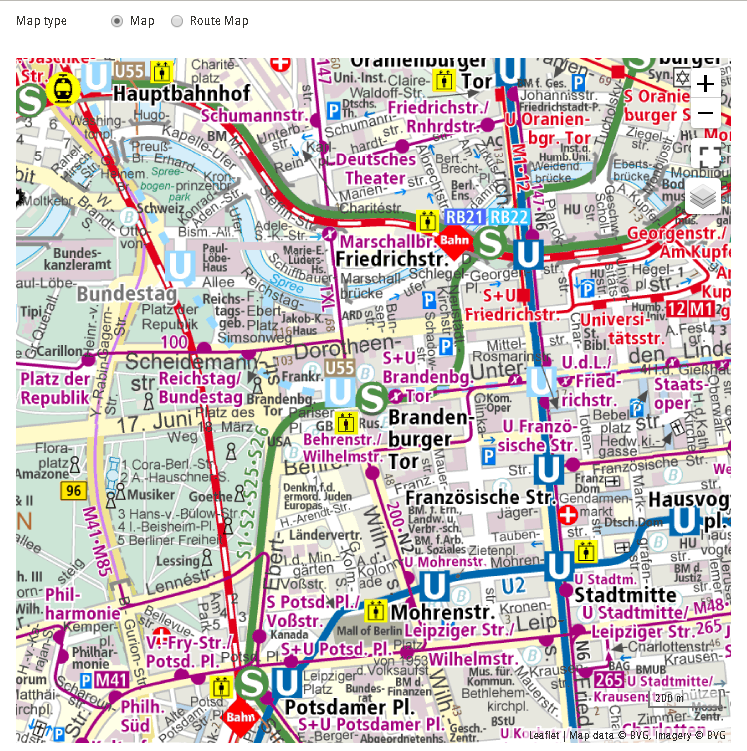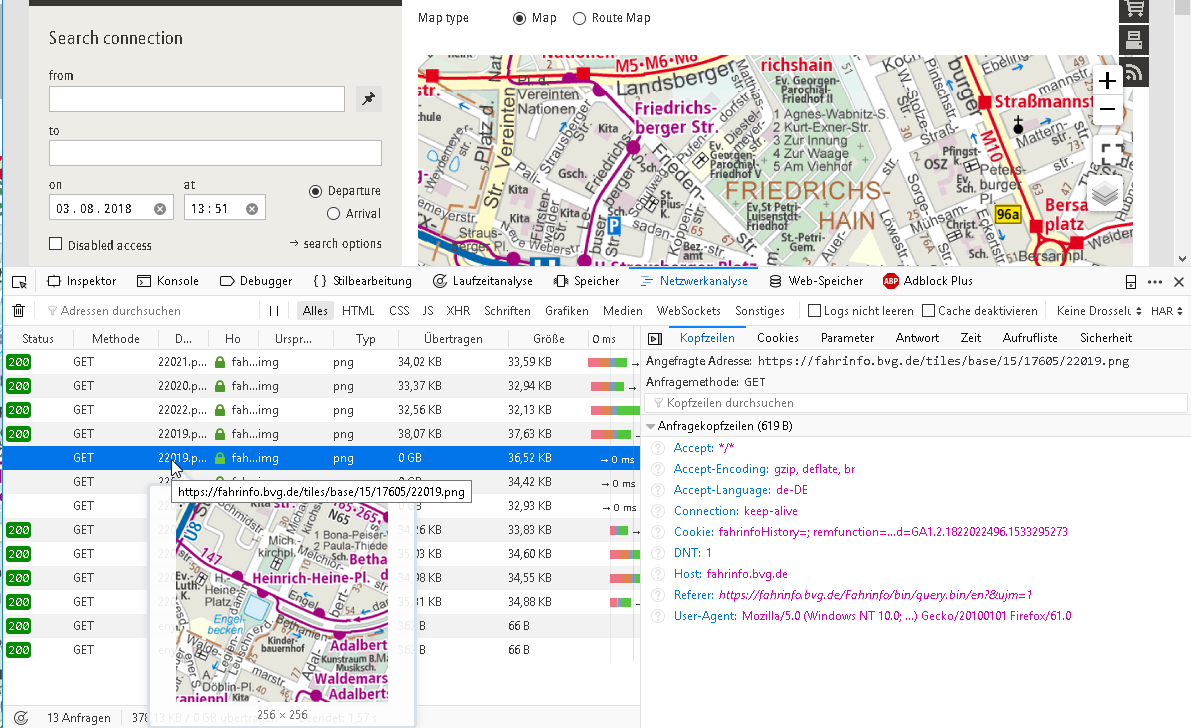- Home
- :
- All Communities
- :
- Global
- :
- Europe
- :
- GeoDev Germany
- :
- GeoDev Germany Blog
- :
- Custom Tiles in ArcGIS JavaScript API
Custom Tiles in ArcGIS JavaScript API
- Subscribe to RSS Feed
- Mark as New
- Mark as Read
- Bookmark
- Subscribe
- Printer Friendly Page
I like to explore the city via public transport and as I am a big map fan, I fell in love with the map of our Berlin based public transport service provider BVG. The map is a great product and has so many levels of information. It has a well know style established in Berlin so I wanted to use it in my own web mapping application.
As I scanned the website of the BVG I noticed the leaflet map on their page:

So I asked the question: "Where does the tiles came from". A short look in the network developer pane in firefox revealed the address https://fahrinfo.bvg.de/tiles/base/15/17605/22019.png (example)

The Tiles can be easily added inside a ArcGIS Javascript API based webmap:
var tiledLayer = new WebTileLayer({
urlTemplate: "https://fahrinfo.bvg.de/tiles/base/{level}/{col}/{row}.png",
title: "BVG Basemap",
copyright:
"Map Data by <a href='https://Bvg.de'>BVG</a>, " +
"Imagery by <a href='https://Bvg.de/'>BVG</a>"
});But as soon you embed this, you will notice: There are only 404s send back from the BVG server. So I examined the URL-schema and found out, that the Y id is somewhat different compared to mapbox or OSM Y ids for the same tile:
| y-tile: BVG | y-tile: Mapbox | zoomLevel |
| 22020 | 10747 | 15 |
| 22015 | 10752 | 15 |
| 22013 | 10754 | 15 |
| 11007 | 5376 | 14 |
| 44025 | 21510 | 16 |
| 44026 | 21509 | 16 |
So the tile indices are somehow shifted compared to the normal schema... So let us reverse engineer the conversion. First approach: plot the IDs on a chart and try some regression:

But as you can see: the line looks straight but the equation is just crap. Let's zoom in a bit:

This is of course a bit different: the regression line flipped and we do have no residuals. The summand looks very common as it is near a power of 2. to be exact: 2^15-1
So there is a direct equation to transform the original tile row into a BVG tile row:
var rownew = -1*row+Math.pow(2,level)-1;So now we need to import this logic into the method ArcGIS uses to get the tiles. And BAMM: here are the tiles:
var tiledLayer = new WebTileLayer({
urlTemplate: "https://fahrinfo.bvg.de/tiles/base/{level}/{col}/{row}.png",
title: "BVG Basemap",
getTileUrl: function (level, row, col) {
var rownew = -1*row+Math.pow(2,level)-1;
return this.urlTemplate.replace("{level}", level).replace("{col}", col).replace("{row}", rownew);
},
copyright:
"Map Data by <a href='https://Bvg.de'>BVG</a>, " +
"Imagery by <a href='https://Bvg.de/'>BVG</a>"
});
Explore the webmap on CodePen, or download it below.
And last but not least: You can even rotate it:
In the end: If you know the math, you can change the world 😉
You must be a registered user to add a comment. If you've already registered, sign in. Otherwise, register and sign in.